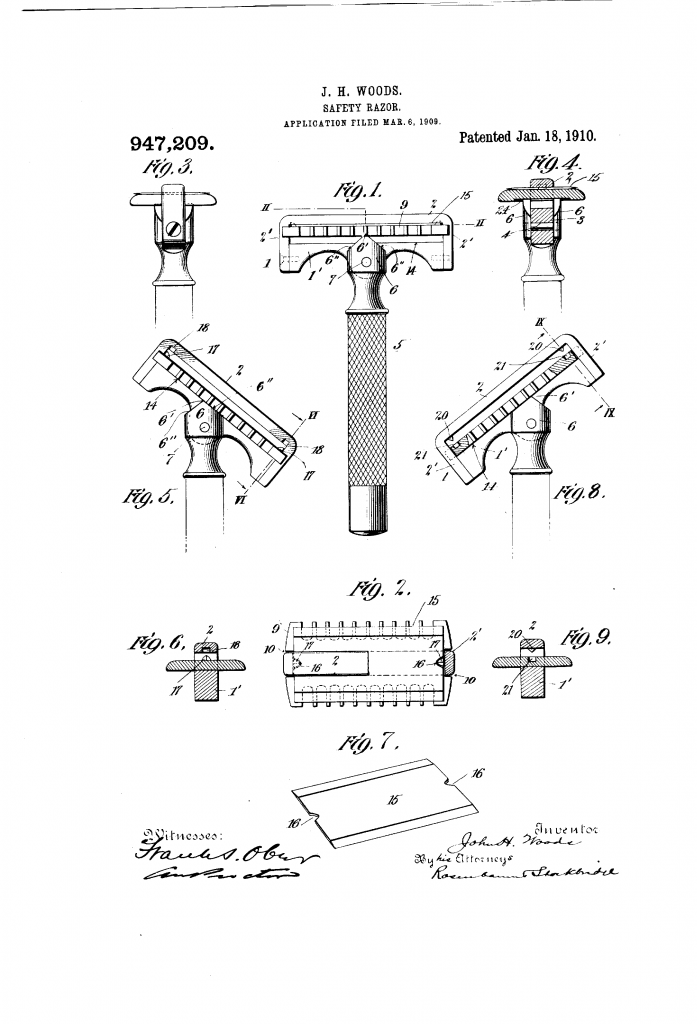One benefit of a safety razor is that you can more or less easily change the blade. John H Woods patented a safety razor in 1910 that aimed at making this even easier than most by using a clamp operated by the handle.
Or as the patent states it:
The principal object is to provide a simple and quick clamping means for engaging the guard on the razor blade, whereby the latter is held against its support with its cutting edges properly exposed adjacent to the sides of the guard.
From US patent 947,209
The razor depicted is not too dissimilar from the Gillette three piece we know and love. At the same time there are some big differences.
The baseplate with a comb guard is similar to a Gillette. The shape of the handle is somewhat recognisable – knurled grip area and a narrower neck between the handle and razor head.
The top cap is replaced by a u-shaped clamping bar. And the method of securing the blade is radically different.

On a normal three piece you would unscrew the handle to undo the top plate. On John’s razor you would snap the handle to one side to release the clamping action of the clamp style razor head. The wedge shaped top of the handle would
The top strap of the clamp had a pair of projections that matched holes in the base plate. Or the baseplate had a pair of perturbances that matched hollows in the clamp. The patent shows both variations. The blade had notches which matched.
To use, the shaver would insert a blade and then pull the handle to its normal position. The wedge would press against the base plate, lifting it up. This would clamp the blade securely against the top bar. In a second patent, filed a week after the first, the base plate is shown with a small groove for the wedge to rest in. This notch is mentioned in the text of the first patent, but not shown in the drawing.
The two things that – to me – speaks against John’s easy clamp safety razor is the lack of a proper top cap and the use of a non standard blade.
The second point I’m willing to forgive. The Gillette three hole blade had not established its dominance in 1909, and the system could easily be modified to use such a blade by changing the geometry of the bulges and depressions.
The first point is where I think I am biased. Modern blades are thinner and more bendy than razor blades used to be. A stiffer blade would need less support from a top plate to avoid flexing.
Overall John’s easy clamp safety razor is an interesting look at what might have been. I see no major problems with the basic idea. I feel the reason why it is forgotten today is that there were too many razor inventors trying to get their slice of the pie. And companies like Gillette and American Safety Razor were trying very hard to get all the pie for themselves. Had John been a few years earlier, he might have been as successful as Christy or CURBO.
You can read the full patent for the easy clamp safety razor at Google Patents. John went on to patent at least one more razor, a single edge sheet metal device I may have a look at later.

Pingback: Easy clamp safety razor - Razors n Blades the shave that saves
Pingback: John H Woods' "barbermaskine" - Wegian WetshavingWegian Wetshaving